Jeremy Calcara was shocked to see the proposed increase in his homeowners insurance this year.
The Lincoln man said he had been paying about $1,700 a year for coverage through Nationwide, but his proposed rate for 2024 was more than $2,500, an increase of about 50%.
Calcara said he was expecting some kind of increase, especially since the assessed value of his home went up nearly 50% in 2023, but a 50% increase for his homeowners insurance rate “seemed ridiculous to me.”
Ridiculous or not, Calcara’s experience is par for the course for many Nebraska homeowners.
A report from LendingTree is the latest to validate what the state’s homeowners already know: Nebraska continues to have some of the highest homeowners insurance rates in the country, and they keep going up.
The report released Tuesday by the online mortgage company shows that over the past five years, Nebraska had the second-largest cumulative increase in homeowners insurance rates at 59.9%. That trailed only Arizona, which had a 62.1% increase over the same period.
People are also reading…
The report also showed that homeowners insurance increases are accelerating in Nebraska more than anywhere else, with the state having the highest increase in the country in the first quarter of this year, at 13.3%.
Nebraska’s recent and longer-term homeowners insurance increases are much higher than the national averages, which were up 37.8% over the past five years and 5.8% in the first quarter, according to the LendingTree report.
Those increases have helped push the average cost of homeowners insurance in Nebraska to $5,363 annually, according to LendingTree, second only to Oklahoma and more than double the average rate nationally of $2,478.
The LendingTree report follows one from online data research center Insurify earlier this year that showed Nebraska’s homeowners rates were 99% more than the national average in 2023. Another report last year from PolicyGenius also found that Nebraska’s average homeowners rate is double the national average and second-highest in the country.
Experts say insurance increases nationally are being driven mostly by two main factors.
One is inflation, which has not only driven up property values but also has led to price increases for building materials and labor, which in turn has boosted insurers’ costs to repair and rebuild damaged structures.
“Insurance companies have to repair more homes, and it’s more expensive to rebuild each one than it might have been just five years ago,” said Rob Bhatt, a LendingTree home insurance expert and licensed insurance agent. “When their costs of paying claims go up, they turn around and raise our rates.”
The other main factor is an increase in severe weather events linked to climate change.
Nebraska has seen that first hand, with events such as the 2019 floods, the December 2021 derecho and tornado outbreak, and the tornado outbreak in Lincoln and Omaha on Arbor Day this year, which real estate data firm CoreLogic estimated may have done more than $500 million in damage.
The LendingTree report said wind and hail accounted for nearly 43% of all homeowners insurance claims between 2017 and 2021.
According to the National Weather Service, there already had been 63 confirmed tornadoes in Nebraska this year as of Tuesday, the second-most ever recorded before June.
And Nebraska annually ranks as one of the worst states for hail damage.
According to the Insurance Information Institute, Nebraska ranked second in the country last year for the number of major hail events it experienced, with 486. That was the 11th year in a row the state ranked in the top five.
Nationally, there were 28 weather disasters in the U.S. that caused at least $1 billion in damage in 2023, according to the the National Centers for Environmental Information, an all-time high.
Those types of events are one of the big reasons premiums have risen so much so fast in Nebraska.
“We’ve seen a significant jump in the number of billion-dollar weather events affecting Nebraska,” said Justin Hakes, vice president of public affairs for the National Association of Mutual Insurance Companies.
Hakes said that from 1980-1999, there were only nine weather disasters in the state that caused at least $1 billion in damage. But that number increased to 35 from 2000-2019. And there were 17 from 2020-2023.
Hakes said the combination of bigger weather disasters and higher costs has meant insurers in Nebraska have often been paying out more in claims than they’ve taken in in premiums in recent years.
According to data from Hakes, property insurers have paid out more than they’ve taken in in Nebraska six out of the past 11 years. In four of those years — 2013, 2014, 2017 and 2022 — they paid out more than $1.50 in claims for every dollar in premium, which in every case was significantly higher than the nation as a whole in those years.
Nationally, underwriting losses for U.S. property/casualty insurers was a combined $38 billion in 2023, which was a 10-year high.
State Farm, which is the largest insurer of property in Nebraska, had a net loss of $6.3 billion last year, which was actually an improvement over the $6.7 billion it lost in 2022.
Lincoln-based Farmers Mutual of Nebraska, which is the largest property/casualty insurer based in the state, recorded more than $1 billion in total claims losses in 2022 and 2023, and recently saw its long-term issuer credit rating reduced to negative by ratings agency A.M. Best.
Chairman and CEO Mark Walz declined to comment for this story, but he told the Journal Star in March that these are challenging times for insurance companies.
“I’ve been in this industry for 33 years and I have never seen it as challenged as it is right now,” Walz said at the time.
For those facing large homeowners insurance increases, it’s a good idea to shop around, even if you’ve been with the same insurer for a long time, and to ask your current insurer for a discount
A recent survey from ValuePenguin found that more than half of homeowners last year either shopped around or asked for a discount from their current insurer, and those who did saved more than $470 on average.
He said that, faced with both a property tax increase and an increase in his homeowners insurance, he decided to shop around for a new policy and was able to find the same coverage for less than he had been paying before, although he had to accept a higher deductible.
“Since I can’t do anything to control the increase in my monthly payment that was going to come from taxes, I opted to change the variable I could control.”
A 4x timelapse seen from downtown Lincoln.
Photos and videos: Tornadoes sweep across Lincoln and Omaha areas

The tornado that hit northeast Lincoln and Waverly, caused train cars to be pushed off the tracks and the roof to collapse at Garner Industries Friday.

Cars and large pieces of metal debris near Garner Industries on Saturday morning in the wake of the tornado that hit areas north and east of Lincoln Friday.

Cars and large pieces of metal debris near Garner Industries on Saturday morning in the wake of the tornado that hit areas north and east of Lincoln Friday.

Large pieces of metal debris line Cornhusker Highway Saturday morning after a tornado hit north of Lincoln on Friday.

Cars and large pieces of metal debris scattered near Garner Industries on Saturday morning in the wake of the tornado that hit areas north and east of Lincoln Friday.

Debris scattered near Garner Industries on April 27 after a tornado hit north of Lincoln the day before.

Cars and large pieces of metal debris at Garner Industries on Saturday morning in the wake of the tornado that hit areas north and east of Lincoln Friday.

Cars and large pieces of metal debris near Garner Industries on Saturday morning in the wake of the tornado that hit areas north and east of Lincoln Friday.

Debris is scattered around Garner Industries on Saturday morning in the wake of the tornado that hit areas north and east of Lincoln Friday.

Debris near Garner Industries on Saturday morning in the wake of the tornado that hit areas north and east of Lincoln Friday.

Cars and large pieces of metal debris at Garner Industries on Saturday morning in the wake of the tornado that hit areas north and east of Lincoln Friday.

Cars and large pieces of metal debris near Garner Industries on Saturday morning in the wake of the tornado that hit areas north and east of Lincoln Friday.

Debris scattered near Garner Industries on Saturday morning after a tornado hit north of Lincoln on Friday.

Large pieces of metal debris damage from the Friday storm on Saturday, April 27, 2024, at Garner Industries.

Ally Mercer (from left), Gabe Sedlacek, Kaleb Andersen and Austin Young watch a tornado from the seventh floor of the 18th and Q streets parking garage on Friday in Lincoln.

Severe weather passes over Lincoln on Friday.

A tornado touches down north of Lincoln on April 26.

A tornado touches down north of Lincoln on Friday.

A tornado touches down north of Lincoln on Friday.

A tornado touches down north of Lincoln on Friday.

A storm passes through Lincoln on Friday.

A storm passes through Lincoln on Friday.

A semi is seen overturned after a tornado passed through Friday northeast of Lincoln.

A semi is seen overturned after a tornado past through, Friday, April 26, 2024, in Lincoln.

Power lines fell after a tornado passed northeast on Lincoln on Friday.

A machine shed is seen damaged after a tornado at 8601 Fletcher Ave. Friday.

Paul Retzlaff (left) talks with Davianne Vice after a tornado damaged a machine shed on Friday near Lincoln.

A train is seen partially derailed on Cornhusker Highway on Friday outside Waverly.

Traffic on eastbound of I-80 is seen backed up near the North 56th Street exit on Friday.

Emergency crews respond after severe weather storms impacted Lincoln on Friday, April 26, 2024.

The Lancaster County Sheriff’s Office said that the Garner Industries facility near U.S. 6 and North 98th Street was hit by a tornado Friday afternoon. The building collapsed and several people became trapped inside, the sheriff’s office said.

The Lancaster County Sheriff’s Office said that the Garner Industries facility near U.S. 6 and North 98th Street was hit by a tornado Friday afternoon. The building collapsed and several people became trapped inside, the sheriff’s office said.
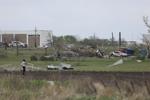
Emergency crews respond after severe weather storms impacted Lincoln on Friday, April 26, 2024.

Emergency crews respond after severe weather storms impacted Lincoln on Friday, April 26, 2024.
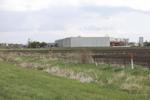
Emergency crews respond after severe weather storms impacted Lincoln on Friday, April 26, 2024.

Damage from the tornado on Friday, April 26, 2024, looking north toward Waverly near 98th and Fletcher Street.

Damage from the tornado on Friday, April 26, 2024, looking north toward Waverly near 98th and Fletcher Street.

Damaged power lines from the tornado on Friday, April 26, 2024, near 84th and Havelock Street.

Damage from the tornado looking west near 98th and Fletcher streets.

Clouds from the storm on Friday, April 26, 2024.

The Lancaster County Sheriff’s Office said that the Garner Industries facility near U.S. 6 and North 98th Street was hit by a tornado Friday afternoon. The building collapsed and several people became trapped inside, the sheriff’s office said.

A worker inspects damaged power lines from the tornado on Friday, April 26, 2024, looking north toward Waverly near 98th and Fletcher Street.

Damaged power lines from the tornado on Friday, April 26, 2024, near 84th and Havelock Street.

A police officer puts cones out to block 98th Street due to damage from the tornado on Friday, April 26, 2024, looking north toward Waverly near 98th and Fletcher Street.

Damage from the tornado on Friday, April 26, 2024, looking north toward Waverly near 98th and Fletcher Street.

A tree lodged in the roof of a machine shed northeast of Lincoln on Friday. A tornado that dropped into Lincoln toppled a manufacturing plant, trapping several people inside and resulting in multiple people being hospitalized for injuries.
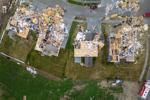
A tornado damaged houses near 212th Street and Fowler Ave in Omaha on Friday, April 26, 2024.
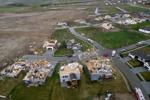
A tornado damaged houses near 212th Street and Fowler Ave in Omaha on Friday, April 26, 2024.
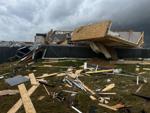
Photos of the damage near Elkhorn, Nebraska.
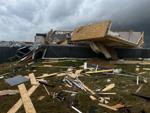
Photos of the damage near Elkhorn, Nebraska.
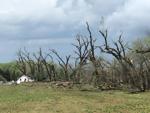
Photos of the damage near Elkhorn, Nebraska.
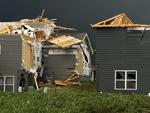
Photos of the damage near Elkhorn, Nebraska.

A tornado is seen on the ground near north of Waverly on Friday.
Reach the writer at 402-473-2647 or molberding@journalstar.com.
On Twitter @LincolnBizBuzz.

Alice J. Roden started working for Trending Insurance News at the end of 2021. Alice grew up in Salt Lake City, UT. A writer with a vast insurance industry background Alice has help with several of the biggest insurance companies. Before joining Trending Insurance News, Alice briefly worked as a freelance journalist for several radio stations. She covers home, renters and other property insurance stories.


